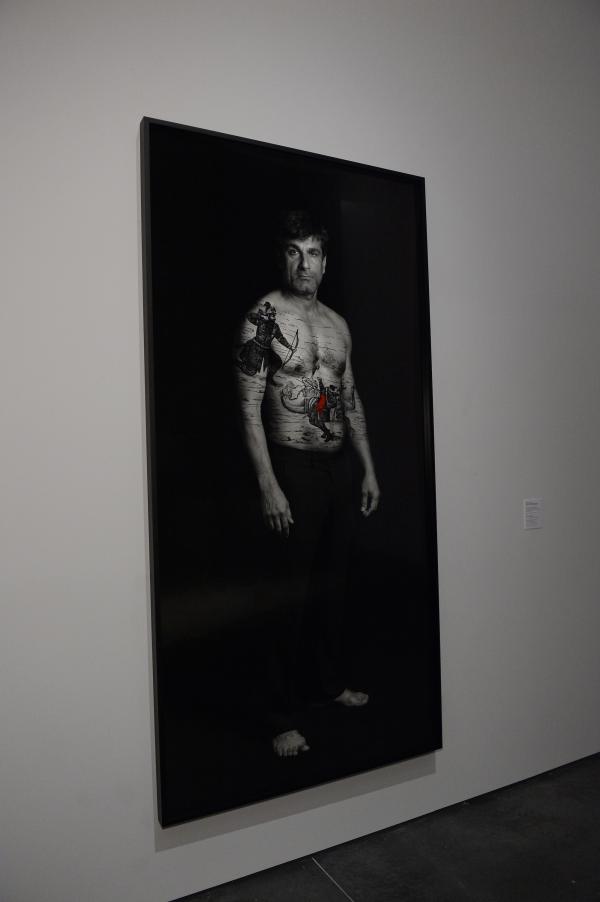Collectors Committee has been one of LACMA's most significant fundraisers since 1986, helping the museum acquire important works of art for our encyclopedic collection. This past weekend, generous Collectors Committee members (90 voting members) raised more than $2 million to acquire nine works of art. Below is a complete list of works acquired through the 2017 Collectors Committee. Check back with Unframed every day for a series of short essays on each of these masterpieces.
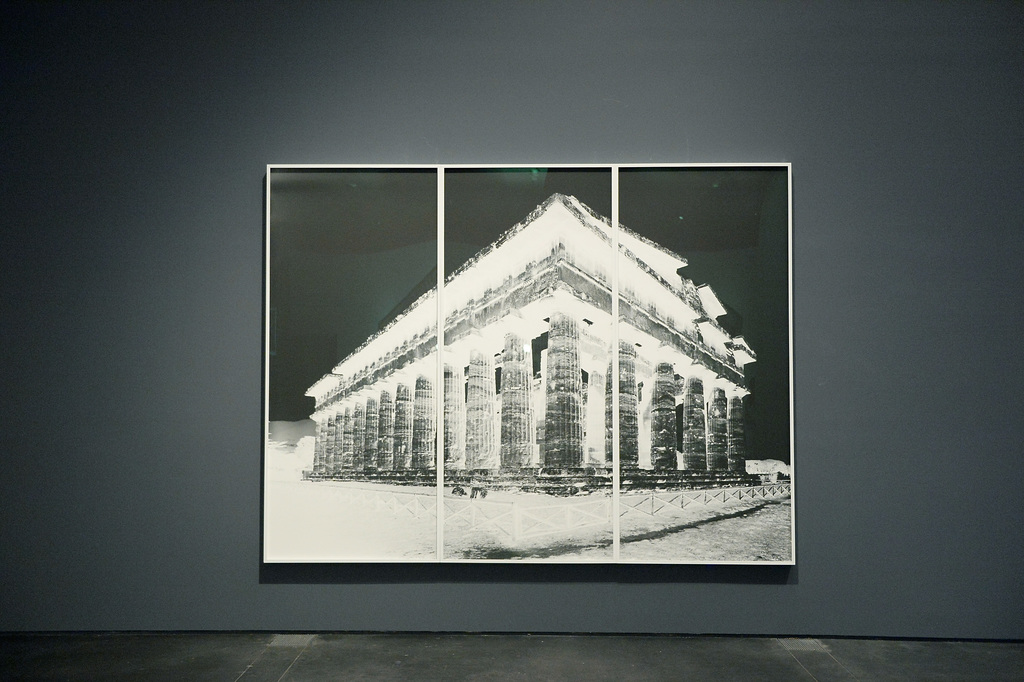
Vera Lutter's Temple of Nettuno, Paestum, XVIII: October 18, 2015 (2015) is a large-scale photograph created by a camera obscura. This work is from a series of photographs Lutter made in Paestum, Italy, at the site of an ancient Greek city whose ruins include three relatively intact temples dating from the 5th and 6th centuries BCE. Taken on a clear bright day, the photograph features an inky black sky as a result of its negative-positive reversal, while the sharp level of detail enabled by the dark-light contrast serves to highlight the texture of the temple’s fluted Doric columns. Currently, Vera Lutter is in the midst of a highly ambitious residency at LACMA, photographing interior and exterior views of buildings on the museum’s campus, and working with the museum's permanent collection.
Sonia Delaunay's La Prose du Transsibérien et de la Petite Jehanne de France (1913) is a landmark of 20th century abstraction and a radical collaboration between artist Sonia Delaunay and poet Blaise Cendrars. Known as the “first simultaneous book,” this over-six-foot-tall accordion folded work is a pairing of Delaunay’s colorful gouache and watercolor abstractions and Cendrars’s unconventional letters and poetry that celebrates the modernity of the pre-World War I years, in an imaginary story of a journey on the Trans-Siberian Railway in 1905.
Kyoto River (c. 1810) is a newly restored pair of eight-panel screens featuring the Hozugawa, a river located in the Arashiyama (Stormy Mountain) area of far northwest Kyoto. This pair of screens is by Yamaato Kakurei, one of the “Ten Great Disciples” of famed painter Maruyama Ōkyo (1733–1795), founder of the Maruyama School of painting of the Edo Period. In 1795, Ōkyo created a pair of screens, today registered as National Treasures, depicting the same river with vegetation and flowering plants on both sides of the river. In these screens, about 15 years later, Kakurei radically re-envisioned the river theme—eliminating all non-river elements—concentrating on only the river, its rocks, and the gold-leaf clouds and mist, to magnificent effect. These unique screens of astonishing beauty and vitality are like no other in the history of Japanese art.
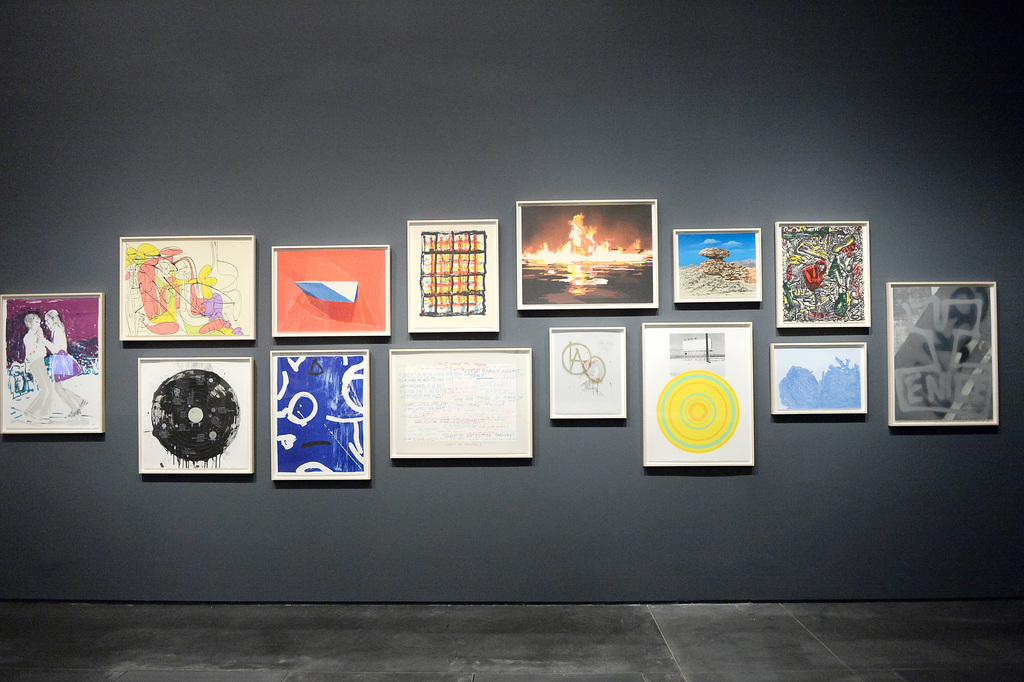
The Hamilton Press Archive (1990–present) includes more than 300 lithographs by 90 artists produced at the famed Los Angeles-based Hamilton Press, founded by master printer Ed Hamilton and artist and printmaker Ed Ruscha. The Hamilton Press Archive represents a fascinating cross-section of the Venice and greater L.A. art scenes over the years and features the lithography of Ed Ruscha, Joe Goode, Ed Moses, Llyn Foulkes, Dennis Hopper, John McCracken, Billy Al Bengston, Gronk, Kenny Scharf, Robbie Conal, Raymond Pettibon, Jonas Wood, Mark Licari, Gajin Fujita, Liza Lou, and more. Hamilton Press has worked largely with local artists, thereby helping to uphold Los Angeles’s reputation as a center for lithography, and contributing to the city’s vital and innovative printmaking community. The Hamilton Press Archive will be coacquired with the UCLA Grunwald Center for the Graphic Arts at the Hammer Museum.
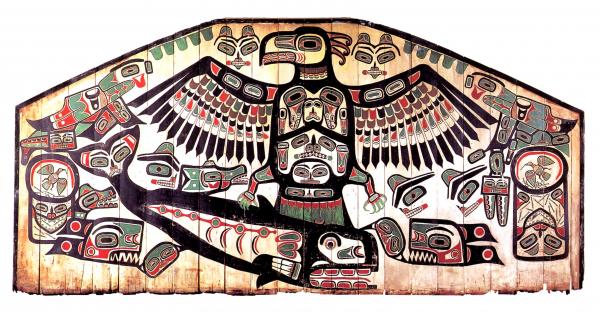
Thunderbird House (Xeitl Hít) Screen (late 19th century) is a monumental heraldic screen of Sitka spruce wood panels painted with complex iconographic scenes in natural pigments created by the Tlingit people of the North Pacific Coast. This exceptionally rare and dramatic 24-foot long screen divided public areas from the private quarters of a chief’s house, and the screen’s depictions of chiefly totems formed a clan’s “crest” or heraldic symbol, referring to the clan’s history, identity, and prestige. The striking scene of this partition is dominated by Thunderbird, the avatar of thunder and lightning, shown capturing an orca surrounded by sharks—key emblems of the Wooshkitaan Eagle Clan. And their depiction—with ovoid forms, thick black outlines, a predominance of eyes, and the use of what some scholars refer to as “split representation”—is a hallmark of Tlingit artistry.
Mariana Castillo Deball's Vista de Ojos (2014) and El Donde estoy va desapareciendo (2011) is a mixed-media installation comprised of two works. El Donde estoy va desapareciendo (The Where I am Is Vanishing) is a video animation bringing to light the “unsettled life” of the Codex Borgia, a pre-conquest Mesoamerican religious manuscript. Vista de Ojos (2014) is a large floor sculpture that details a series of cartographic renderings of Tenochtitlan (present day Mexico City), just 30 years after the arrival of the Spaniards—making it the earliest depiction of the region post-conquest. Castillo Deball will be included in A Universal History of Infamy, one of LACMA’s featured exhibitions during Pacific Standard Time LA/LA. The exhibition opens on August 20, 2017.
Taihu Stone is the first Chinese spirit stone to enter the museum’s collection. The Chinese tradition of collecting strange and marvelous stones—which reached its peak during the Ming dynasty (1368–1644)—focused on stones as representations of the primordial energies that created the universe, as well as a symbol of human virtues of strength and endurance. The Chinese elevated such stones to the level of the most refined works of art, and venerated them as objects of contemplation and meditation. The Taihu Stone will be on view in the upcoming exhibition Wu Bin's Ten Views of a Lingbi Stone, opening in the Resnick Pavilion in December 2017.
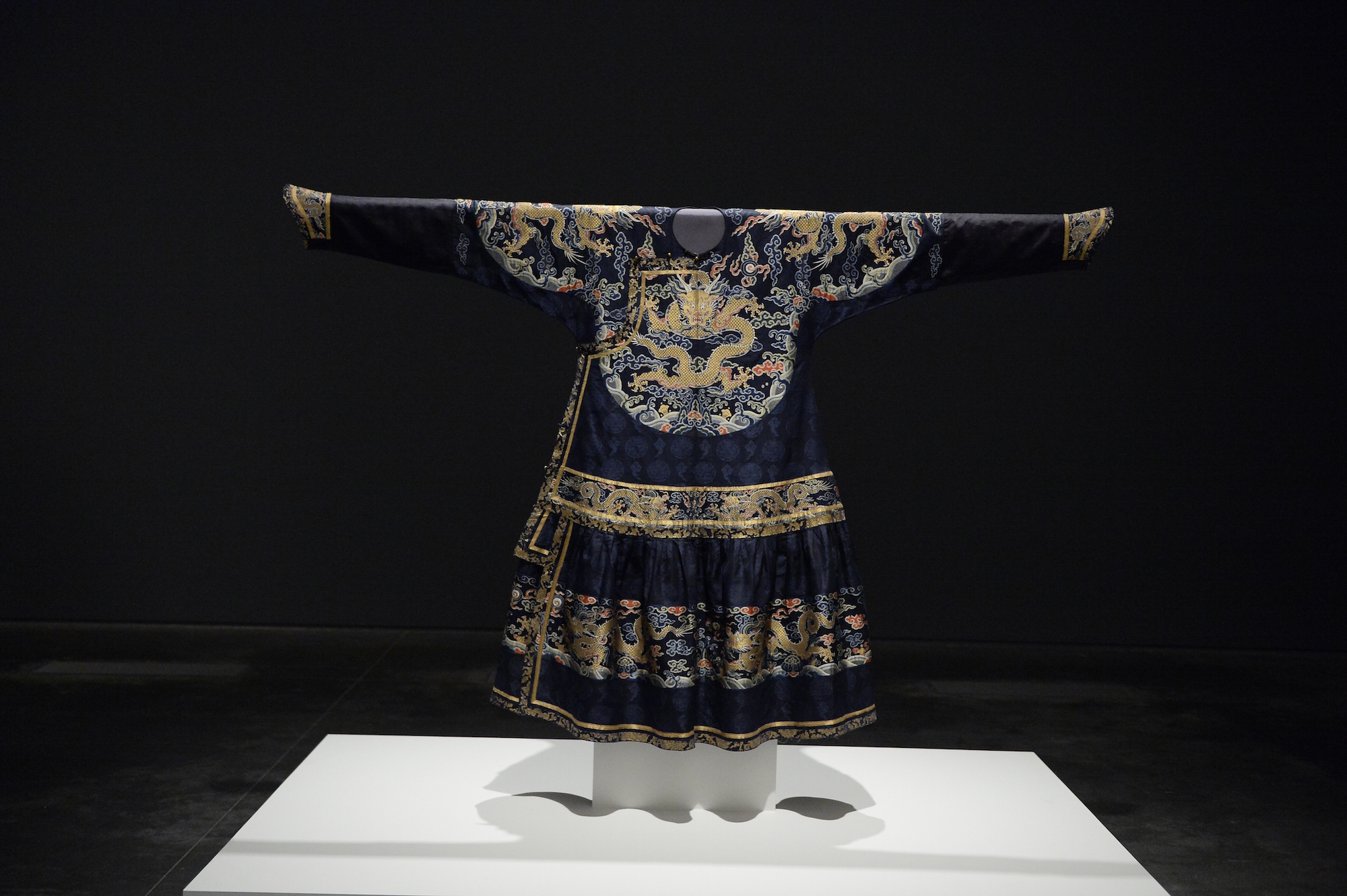
This magnificent Man's Formal Court Robe (chaopao) from the Kangxi reign of the Qing dynasty is composed of indigo-dyed blue silk damask patterned with dragon roundels and clouds that seamlessly transitions into areas of silk satin brocaded with colored silk- and gold-thread five-claw dragons, mythical creatures symbolizing imperial power and signaling an individual's rank. Chaopao were restricted to the Qing emperor or highest-ranking male courtiers and were worn for the most important ritual functions held within the Forbidden City. This incredible example is considered the only comparable early 18th century chaopao outside of the Palace Museum in Beijing’s Forbidden City. This exceptional and rare chaopao will be highlighted in a major exhibition organized by LACMA in September 2018.
A suite of three contemporary works for the Art of the Middle East collection included Shrin Neshat's Amir (Villains) from the series The Book of Kings (2012), a photograph with tattoo-like images derived from the Shahnameh, or Book of Kings, the Iranian national epic, which tells of ancient kings and heroes; Khosrow Hassanzadeh's Pahlavan II, Ready to Order (2008), a mixed-media box focusing on a heroic figure that provides a contemporary outlook on Iranian history, religion, and culture; and Yasmin Sinai's The Act of Gordafarid, the Female Warrior (2015, a group of life-size sculptures interpreting the mythological story of Gordafarid, the only woman warrior of the Shahnameh. These works will be featured in the upcoming LACMA exhibition In the Fields of Empty Days: The Intersection of Past and Present in Iranian Art, planned for May 2018.



